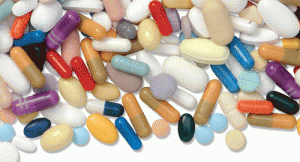 In the CLEAR 1 study presented June 12 at the 2015 meeting of the European League Against Rheumatism (EULAR), researchers investigated lesinurad, a selective uric acid reabsorption inhibitor (SURI), combined with xanthine oxidase inhibitors, for treating gout.1
In the CLEAR 1 study presented June 12 at the 2015 meeting of the European League Against Rheumatism (EULAR), researchers investigated lesinurad, a selective uric acid reabsorption inhibitor (SURI), combined with xanthine oxidase inhibitors, for treating gout.1
Patients with an inadequate response to standard care were randomized to receive 200 mg (n = 201) or 400 mg (n = 201) of lesinurad daily in combination with allopurinol or allopurinol plus placebo (n = 201). This 12-month, randomized, double-blind, Phase 3 study involved patients 18–85 years old on stable, appropriate allopurinol doses, ranging from 200–600 mg—most receiving 300 mg. At study screening, all patients had a serum uric acid (sUA) level ≥ 6.5 mg/dL and had two or more gout flares in the previous year. The baseline sUA measurement was 6.94 ± 1.27 mg/dL, with 14.3% having tophi.
The primary endpoint was the proportion of patients achieving the sUA target of < 6.0 mg/dL by Month 6. Secondary endpoints were mean gout flare rate requiring treatment (GFRT, Months 6–12) and the proportion of patients with complete resolution of one or more target tophi by Month 12. Treatment-emergent adverse events and laboratory data were assessed.
Both lesinurad-treated groups had significantly increased proportions of patients achieving sUA targets compared with placebo plus allopurinol-treated patients. Approximately twice as many patients achieved these targets at Month 6. At Month 6, sUA < 6 mg/dL, lesinurad 200 mg results were 54%, lesinurad 400 mg results were 59% and placebo results were 28%. The majority of patients were male (94%) with a mean ± SD age of 51.9 ± 11.3 years and a duration of gout disease of 11.8 ± 9.4 years. There were no significant differences observed between groups in mean rate of GFRT (Month 6–12) or patients with complete target tophus resolution (by Month 12).
The percentage of patients developing serious treatment-emergent adverse events (TEAEs) or serious renal-related TEAEs was comparable between the 200 mg lesinurad group and the placebo-treated group. Patients who received 400 mg lesinurad had twice as many serious TEAEs or serious renal-related TEAEs. Additionally, more patients treated with 400 mg lesinurad developed a more-than-two-times increase in the serum creatinine (6% vs. 1% of 200 mg lesinurad-treated and 0% of placebo-treated patients). Most of the serum creatinine elevations resolved without stopping lesinurad. Lesinurad was generally well tolerated with a good clinical response.
In a CLEAR 2 study also presented at EULAR, Bardin et al evaluated the same study population and parameters with similar results.2 The majority of patients (n = 610) were male (96.2%) with a mean ± SD age of 51.2 ± 10.9 years and a duration of gout disease of 11.5 ± 9.3 years. Allopurinol doses ranged from 200–900 mg, with most receiving 300 mg.
